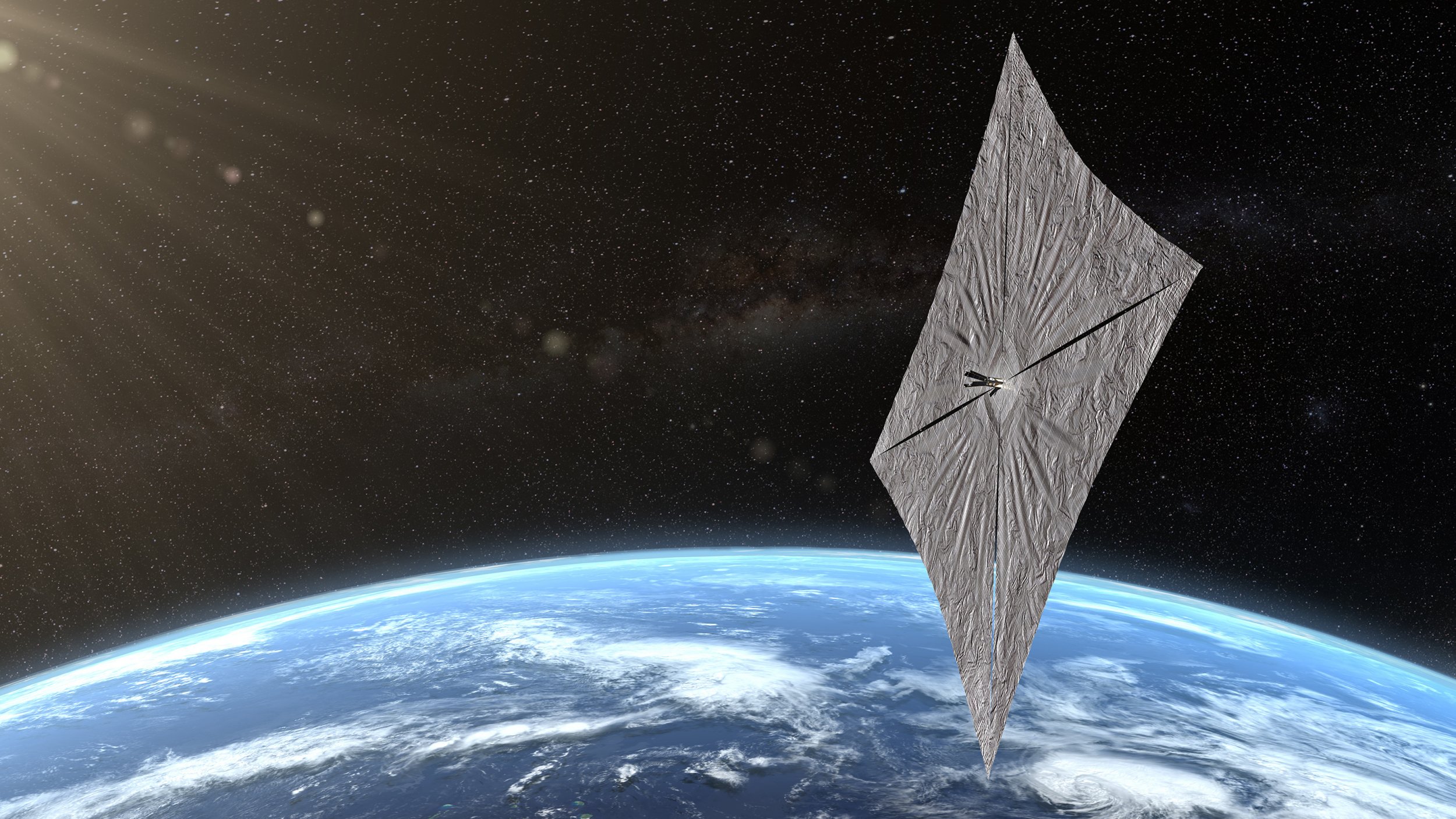
A spacecraft featuring a novel method of propulsion is set to attempt the first controlled flight in Earth's orbit to be powered by solar sails.
The LightSail 2—which was developed by the Planetary Society, with support from public donations—is scheduled to launch aboard a SpaceX Falcon Heavy Rocket from the Kennedy Space Center in Cape Canaveral, Florida on June 22.
Weighing just 11 pounds, LightSail 2 consists of a small main body, known as a CubeSat—standardized, affordable spacecraft about the size of a loaf of bread—and a deployable solar sail that measures around 350 square feet in area.
This sail is designed to propel the spacecraft by harnessing the gentle push of photons—particles of light—from the sun, in a manner akin to how conventional sails use the power of the wind to propel boats.
"Light from the Sun—or possibly lasers in the future—propels the spacecraft," LightSail program manager Bruce Betts told Newsweek. "Particles of light carry momentum so they push on things. In our everyday life, we never notice this because the push is so small. Even subtle air currents will overwhelm the effect."
"The push on the entire LightSail 2 sail is only the equivalent of the weight of a housefly on Earth," he said. "But if you put a spacecraft in the vacuum of space, the light pressure effect becomes significant, particularly if you deploy a shiny sail and keep your spacecraft mass as low as possible."
The manufacturer's hope that the flight will demonstrate the potential for using sunlight in this way to power spacecraft, an idea that has long fascinated scientists. This technique could offer significant advantages over traditional propulsion methods, according to Betts.
"Traditional methods to propel spacecraft require fuel," he said. "Solar sailing does not, thus providing several advantages: never running out of fuel; no fuel limits on changes to speed or orbit; and, conceptually, a lower launch mass. In addition, although the acceleration from sunlight is small, it is constant. Unlike spacecraft with chemical rockets that burn for minutes or seconds but coast the rest of the time, solar sails will keep accelerating, enabling higher speeds over time."
The launch will mark the culmination of a project that began in earnest a decade ago, although its origins lie with the three scientists who founded The Planetary Society—the world's largest non-profit space organization—in 1980.
"Forty years ago, my professor Carl Sagan shared his dream of using solar sail spacecraft to explore the cosmos. The Planetary Society is realizing the dream," Planetary Society CEO and renowned science communicator Bill Nye said in a statement.
"Thousands of people from all over the world came together and supported this mission. We couldn't have done it without them," he said. "Carl Sagan, and his colleagues Bruce Murray and Louis Friedman, created our organization to empower people everywhere to advance space science and exploration. We are go for launch!"
Once in orbit, LightSail 2 will attempt to increase its altitude using sunlight, something no spacecraft has done before. The launch will include 24 other spacecraft destined for three different orbits under the Department of Defense's Space Test Program-2. LightSail 2 will be transported within another spacecraft, known as Prox-1, to be deployed 7 days after launch at an altitude of around 450 miles.
Shortly after, LightSail 2 will unfurl its sail made of Mylar—a thin polyester film—and turn toward the sun for half of each orbit. The continuous pressure of the sunlight against the sail, while incredibly weak, should raise its orbit by a measurable amount, the team say.
A successful launch of LightSail 2—the successor to LightSail 1, which The Planetary Society launched in 2015 to test the sail deployment system—could mark the first step towards the commercialization of such technology.
"Solar sailing could be used for a variety of space missions, including enabling long term missions where light pressure can be used to make stable orbits out of otherwise unstable orbits," Betts said. "For example, now spacecraft at a stable point between the Earth and sun monitor oncoming solar storms. By balancing forces, a solar sail could be placed closer to the sun than currently possible. This would enable longer warning times for solar storms headed for Earth."
"LightSail 2 is testing the ability to use solar sailing with very small standardized spacecraft called CubeSats," he said. "CubeSats are already popular in Earth orbit with universities and student groups as well as space agencies. Solar sailing could provide a fuel-free interplanetary propulsion technique to use with these small spacecraft that can hitch rides on launches of larger spacecraft. In the further future, sails might be used to reach speeds high enough to facilitate interstellar missions."
This article was updated to include comments from Bruce Betts.
Uncommon Knowledge
Newsweek is committed to challenging conventional wisdom and finding connections in the search for common ground.
Newsweek is committed to challenging conventional wisdom and finding connections in the search for common ground.
About the writer
Aristos is a Newsweek science reporter with the London, U.K., bureau. He reports on science and health topics, including; animal, ... Read more
To read how Newsweek uses AI as a newsroom tool, Click here.








